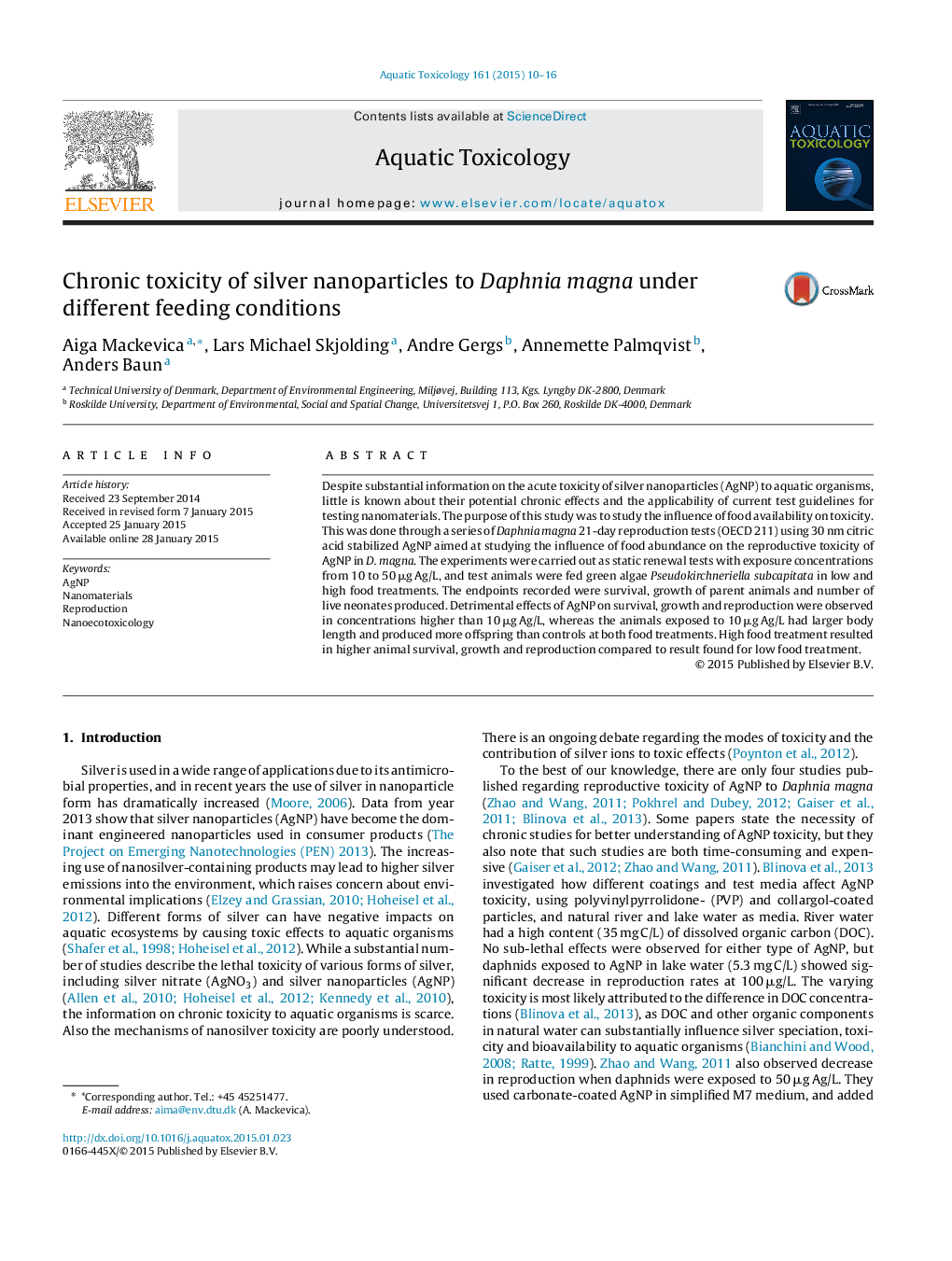| Article ID | Journal | Published Year | Pages | File Type |
|---|---|---|---|---|
| 6382181 | Aquatic Toxicology | 2015 | 7 Pages |
Abstract
Despite substantial information on the acute toxicity of silver nanoparticles (AgNP) to aquatic organisms, little is known about their potential chronic effects and the applicability of current test guidelines for testing nanomaterials. The purpose of this study was to study the influence of food availability on toxicity. This was done through a series of Daphnia magna 21-day reproduction tests (OECD 211) using 30 nm citric acid stabilized AgNP aimed at studying the influence of food abundance on the reproductive toxicity of AgNP in D. magna. The experiments were carried out as static renewal tests with exposure concentrations from 10 to 50 μg Ag/L, and test animals were fed green algae Pseudokirchneriella subcapitata in low and high food treatments. The endpoints recorded were survival, growth of parent animals and number of live neonates produced. Detrimental effects of AgNP on survival, growth and reproduction were observed in concentrations higher than 10 μg Ag/L, whereas the animals exposed to 10 μg Ag/L had larger body length and produced more offspring than controls at both food treatments. High food treatment resulted in higher animal survival, growth and reproduction compared to result found for low food treatment.
Related Topics
Life Sciences
Agricultural and Biological Sciences
Aquatic Science
Authors
Aiga Mackevica, Lars Michael Skjolding, Andre Gergs, Annemette Palmqvist, Anders Baun,
